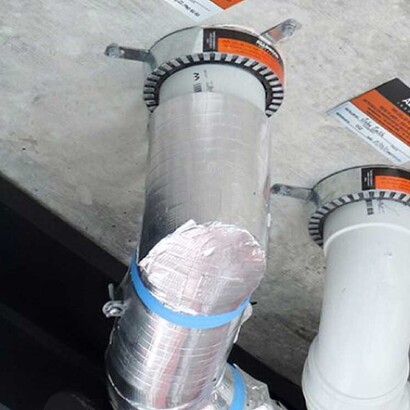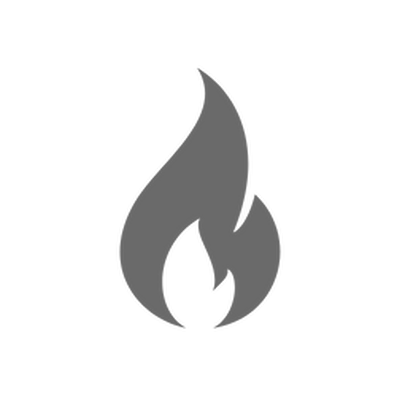Passive Fire Installation
In the world of construction and property management, safety is paramount.
One often overlooked but crucial aspect of ensuring a secure environment is Passive Fire Installation.
Bakker PFI understands the importance of passive fire protection the essential aspects of installing these life-saving systems, and the role of the Fire Protection Association New Zealand (FPANZ).
Understanding Passive Fire Installation
Passive Fire Installation integrates fire-resistant materials and systems into a building's structure.
Unlike active fire protection measures, such as sprinklers or alarms, these elements work passively.
They contain fires, limit the spread of smoke, and create safe evacuation routes, buying time for occupants to escape and firefighters to arrive.
The Importance of Correct Installation
The effectiveness of passive fire protection hinges on correct installation.
A poorly installed firestop, for instance, is as good as no firestop at all.
Improper installation compromises safety and can lead to non-compliance with building codes and insurance issues.
That's why engaging certified professionals with a proven track record is essential.
Choosing a company registered with the Fire Protection Association New Zealand (FPANZ) provides a level of assurance in New Zealand.
While not a guarantee of service quality, membership necessitates meeting specific requirements.
These requirements include insurance verification, referee checks from industry peers, interviews, and adherence to a strict code of conduct.
You can explore the list of FPANZ members to verify a company’s credentials.
Key Elements of Passive Fire Protection Services
Passive fire protection encompasses various components, including:
Fire-rated walls and floors
Fire doors and frames
Firestopping systems to seal gaps and penetrations
Intumescent products like paints and sealants that expand with heat
Ductwork protection to prevent fire spread
These elements work together to create a comprehensive fire safety system within the building, protecting property and occupants.
Navigating the Installation Process
Effective Passive Fire Installation requires a collaborative approach involving building owners, fire engineers, architects, and skilled installers.
This is particularly important when retrofitting existing buildings to meet current fire safety standards.
This collaboration ensures the design, material selection, and installation process adhere to the specific requirements outlined in the New Zealand Building Code.
Compliance is Non-Negotiable
Adhering to local building codes and obtaining the necessary permits are paramount.
In Auckland, a comprehensive list of registered Producer Statement authors is available for building practitioners to consult.
These professionals possess the technical knowledge and experience to provide certified documentation that confirms compliance with the building code, ensuring peace of mind for building owners.
The FPANZ Position Statement: Your Go-To Resource
A helpful resource for understanding Passive Fire Installation in New Zealand is the Fire and Smoke Stopping Methodology published by FPANZ.
This document provides a clear and concise overview of the key aspects of passive fire protection, outlining the necessary information required for achieving compliant installations.
By adhering to these guidelines, building practitioners can ensure their work meets the required standards.
Choosing the Right Materials: Why Quality Matters
Using high-quality fire-resistant materials is non-negotiable in passive fire installations.
These materials undergo rigorous testing to ensure they meet strict fire safety standards. They play a crucial role in preventing the spread of fire and smoke, making a significant difference in the event of a fire.
This adds another layer of security to your building. Consider factors like fire resistance rating, durability, and compliance with relevant standards when choosing materials.
Opting for certified products from trusted suppliers ensures that the materials used in your passive fire installation will perform as expected when it matters most.
Understanding Fire Safety Considerations in the Design Process
Integrating fire safety considerations from the initial design stages of a building is essential for effective Passive Fire Installation.
Architects and designers must be well-versed in fire safety regulations and incorporate appropriate measures to create a fire-resistant structure.
Collaboration among architects, fire engineers, and passive fire protection specialists is crucial during this phase.
By addressing fire safety concerns early on, potential risks can be mitigated cost-effectively. It ensures a cohesive and compliant approach to Passive Fire Installation.
Construction Phase Fire Safety
The construction phase presents its own set of fire safety challenges.
During this phase, buildings are more susceptible to fire hazards due to factors such as the presence of flammable materials and ongoing construction work.
Implementing robust fire safety protocols on construction sites is crucial to mitigate these risks.
Regular inspections by qualified fire safety professionals can help identify and address potential hazards.
Clear communication channels between the construction team, fire safety personnel, and building owners are essential.
Maintaining a clean and organized construction site, properly storing flammable materials, and providing adequate fire extinguishers and other firefighting equipment are paramount in minimizing fire risks during the construction phase.

The Role of a Passive Fire Team Consultant
A Passive Fire Team Consultant plays a vital role in ensuring the seamless and compliant installation of Passive Fire Protection systems.
This individual serves as the primary point of contact for all matters related to passive fire protection on a project, coordinating with various stakeholders, including building owners, architects, contractors, and fire engineers.
Their expertise ensures that all aspects of Passive Fire Installation adhere to the highest industry standards and meet all necessary regulatory requirements.
The Passive Fire Team Consultant’s responsibilities include: developing detailed fire safety plans, conducting regular site inspections, overseeing the installation process, and ensuring the use of appropriate materials.
Their comprehensive understanding of building codes and fire safety regulations enables them to anticipate challenges, provide effective solutions, and deliver a successful Passive Fire Installation project.
By having a dedicated Passive Fire Team Consultant, building projects benefit from increased efficiency, improved communication, and a higher level of fire safety assurance.
Wrapping Up
Passive Fire Installation is not just a regulatory requirement—it's a vital investment in safeguarding lives and property.
Proper installation, quality materials, and adherence to building codes are essential for effective fire protection.
Partnering with industry experts ensures your building meets the highest safety standards. At Bakker PFI, we are committed to delivering top-tier passive fire protection solutions.
Our expertise, dedication, and attention to detail make us the leading choice in the industry.
Contact Us
Secure your building’s fire safety with Bakker PFI, the industry leaders in passive fire protection.
Contact us today for a comprehensive consultation and quote.
Let our expert team help you enhance your property’s safety and compliance.
Email: info@bakkerpfi.com
Phone: (09) 393-5516
Click here to learn more about our services and discover how we can help you safeguard your property with our professional fire protection installations.
Together, we can build a safer future.



